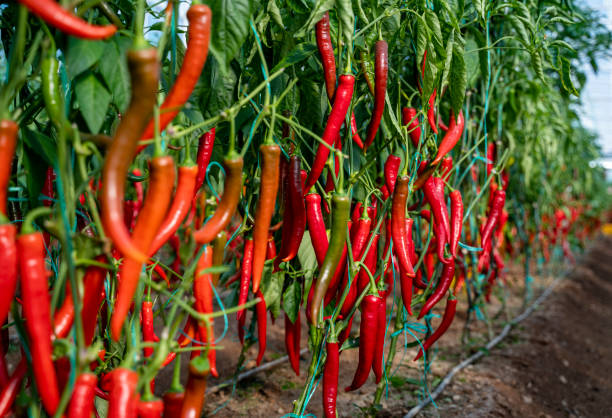ISLAMABAD: China and Pakistan’s collaboration on chilli farming has doubled farmers’ income, according to a report published by Gwadar Pro on Tuesday.
According to the report, Chilli growers in Lodhran and Layyah districts of Punjab are reaping higher incomes after collaborating with a Chinese company, LTEC.
The red chilli contract farming under China-Pakistan Economic Corridor (CPEC) initiative has also stabilized the local market as it offers guaranteed income for the farmers.
Moreover, the collaboration has generated thousands of farming jobs, especially for women, in rural areas of Sindh and Punjab provinces of Pakistan.
Irshad Hussain, a graduate of the UAF (University of Agriculture, Faisalabad), told Gwadar Pro that he started growing chillies in 2017. “However, I was even unable to meet the production cost before collaborating with the Chinese company in 2023”, Hussain said.
Hussain got a contract with the LTEC for 100 acres, but he grew red chillies on 115 acres due to the better local market demand following China-Pakistan red chillies project.
He said the Chinese red and green chillies’ seeds not only produced higher yields but also garnered higher prices in the local market because of their superb quality.
It is a blessing for the farmers as their incomes have doubled, Hussain said.
“Also, even being an agriculturist myself, I learnt a lot from the Chinese experts, so you can imagine how much the ordinary farmers would have benefited from this Chinese collaboration,” he said.
Malik Masood ul Haq cultivated 25 acres for the LTEC in 2023. This year, he has grown red chillies on 85 acres of land in Lodhran, Punjab, and plans to extend the farm to 100 acres next year.
“My relatives and other villagers are also eyeing partnership with the LTEC in the future,” he said. He also admired the quality of Chinese chilli seeds, both red and green.
Sher Afghan Khan, a red chilli farmer in Layyah, Punjab, said that he had employed 200 women in his 14-acre farm. “Larger farms like 100 acres or above have provided jobs to thousands of local women,” he said.























